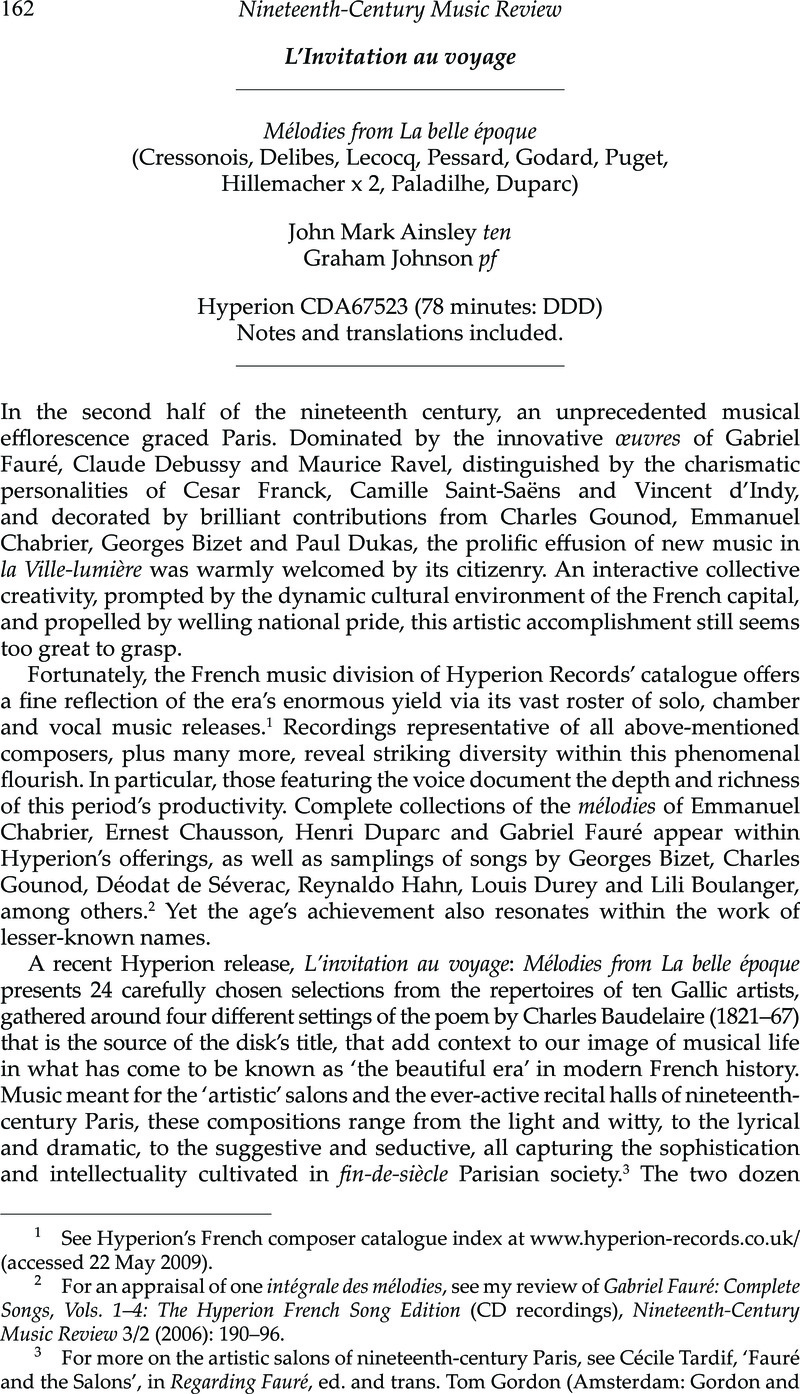No CrossRef data available.
Article contents
L'invitation au voyage: Mélodies from La belle époque
Published online by Cambridge University Press: 13 April 2011
Abstract

- Type
- CD Reviews
- Information
- Copyright
- Copyright © Cambridge University Press 2009
References
1 See Hyperion's French composer catalogue index at www.hyperion-records.co.uk/(accessed 22 May 2009).
2 For an appraisal of one intégrale des mélodies, see my review of Gabriel Fauré: Complete Songs, Vols. 1–4: The Hyperion French Song Edition (CD recordings), Nineteenth-Century Music Review 3/2 (2006): 190–96Google Scholar.
3 For more on the artistic salons of nineteenth-century Paris, see Tardif, Cécile, ‘Fauré and the Salons’, in Regarding Fauré, ed. and trans. Gordon, Tom (Amsterdam: Gordon and Breach, 1999): 1–14Google Scholar.
4 A valuable characterization of the mélodie, expressed in the context of a comprehensive examination of one composer's contribution to the genre, emerges in Nectoux, Jean-Michel, Gabriel Fauré: Les voix du clair-obscur, 2nd rev. ed. (Paris: Fayard, 2008): 111–29, 238–62, and especially 443–79Google Scholar.
5 See ‘Schubert Familiar and Unfamiliar: New Perspectives’, the special themed issue of Nineteenth-Century Music Review 5/2 (2008): 123–64,Google Scholar for a comprehensive review of Hyperion's 40-CD set, Franz Schubert (1797–1828): The Complete Songs, composed of invited essays by James Parsons, Susan Wollenberg, Susannah Clark, David Gramit, Susan Youens, Lorraine Byrne Bodley and Richard Kramer, a monumental recording project also led by Graham Johnson, that includes 23 contributions by John Mark Ainsley.




